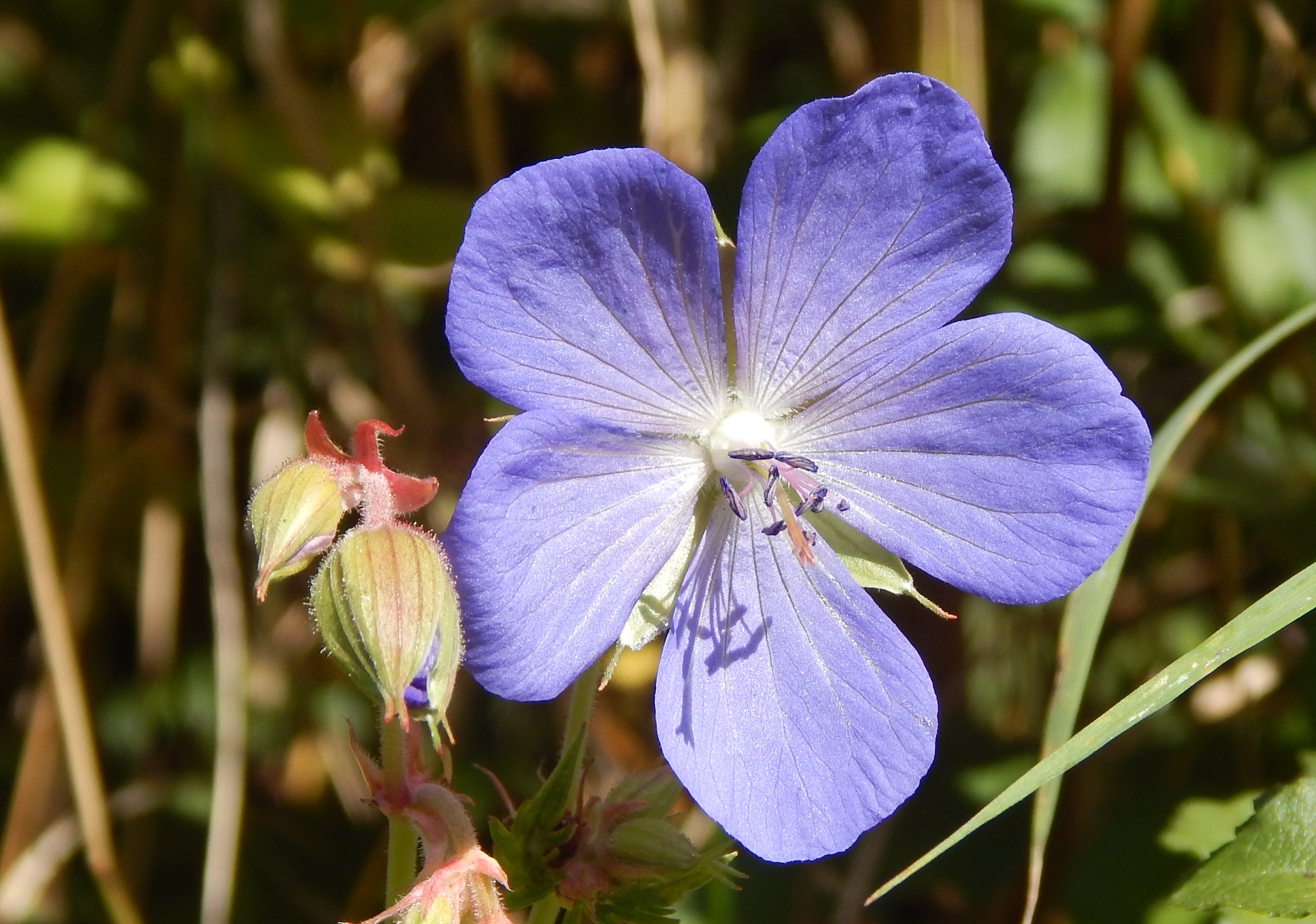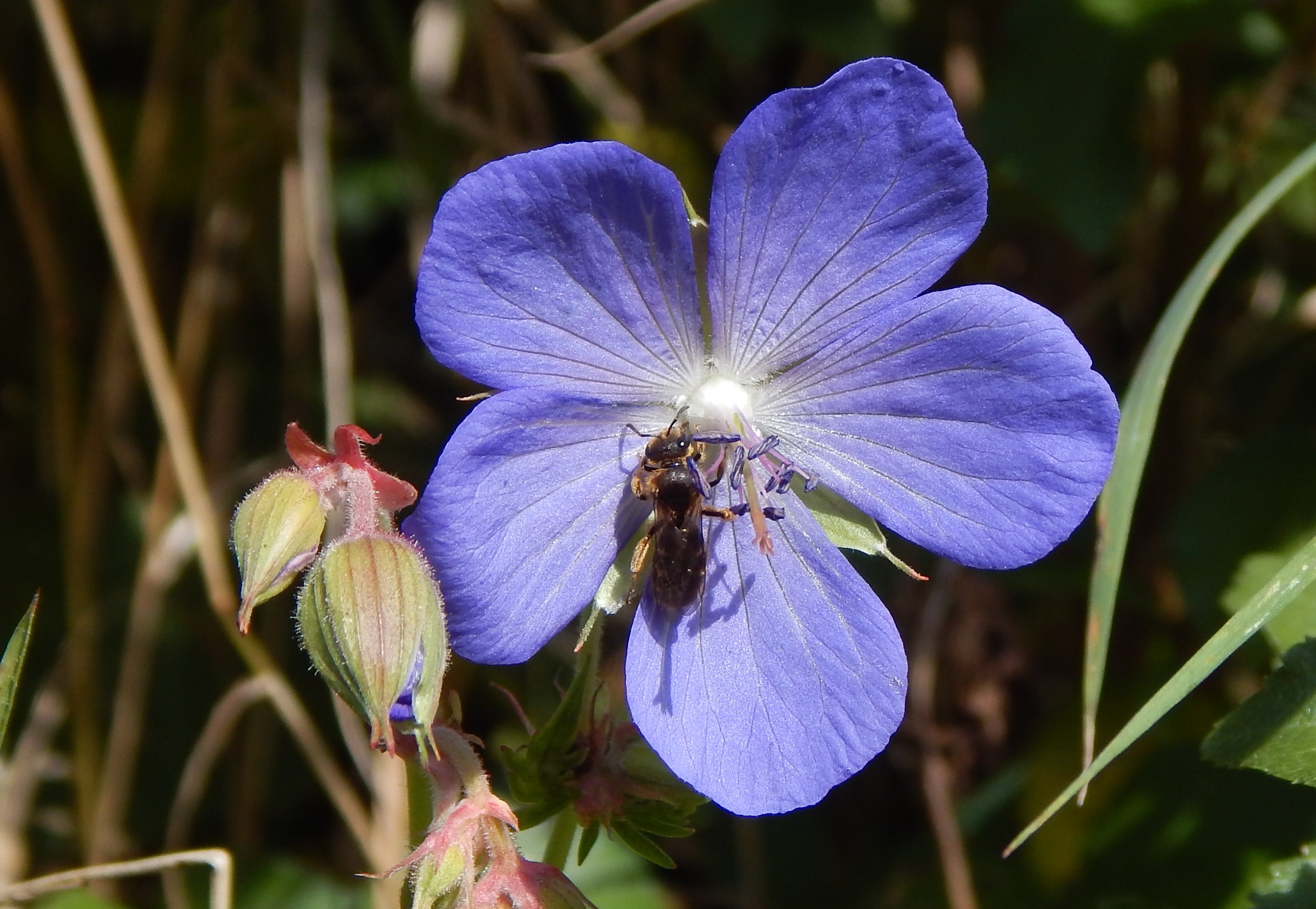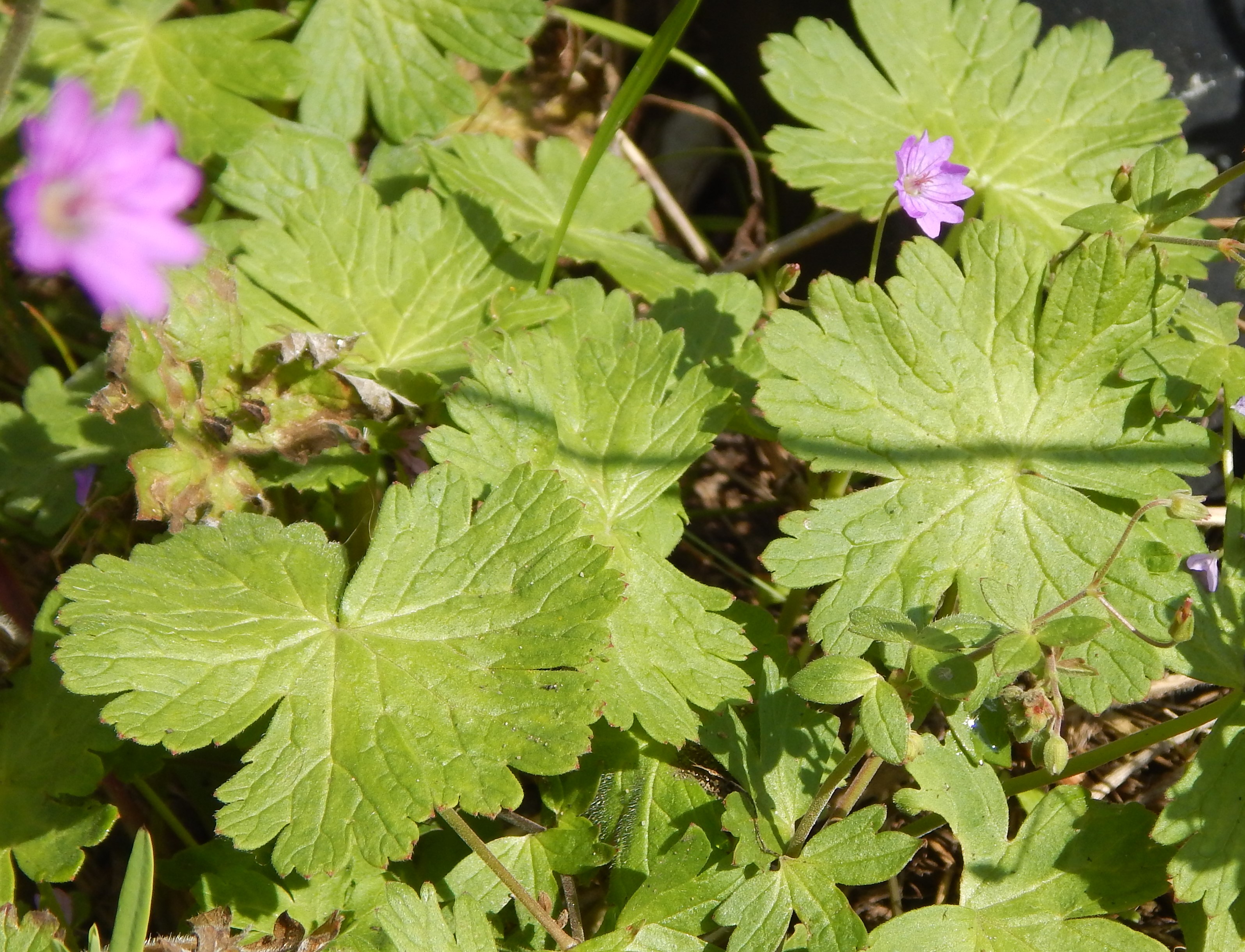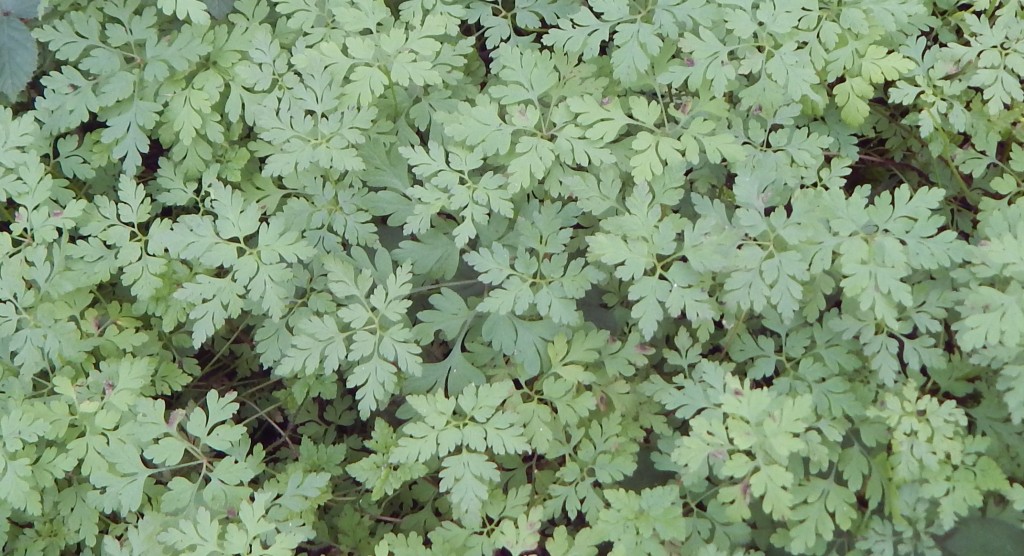
[162] Geranium robertianum, Herb Robert and Others
Introduction
Following yesterday’s post, this post will consider the wild species Geranium robertianum, Herb Robert, and all other Geranium species. Herb Robert (or Herb-Robert) may also be called Red Robin, Stinking Bob, Robert’s Geranium or several other names.
There are over four hundred species of Geranium and many hybrids and cultivars. They are generally called cranesbills or hardy geraniums. Confusingly most species of Pelargonium, a closely related genus, are also known as geraniums.
[I will use the word cranesbill throughout where other orthography includes crane’s-bill or other variations.]
Taxonomy
Kingdom – Plants
Division – Vascular Plants
Class – Angiosperms (Flowering Plants)
Order – Geraniales
Family – Geraniaceae
Genus – Geranium
Scientific Names – Geranium robertianum and see Text
There are too many species, hybrids and cultivars to list.
Name
See [161] Meadow Cranesbill, for the names Cranesbill and Geanium.
Herb Robertwas named after Robert of Molesme (1028-1111) was an abbot and herbalist, one of the founders of the Cistercian Monks, later canonized as a saint.
When first named by Linnaeus the genus Geranium included all the species now known as Pelargonium, which were split off in 1789. (Pelargonium is derived from the Greek pelargos meaning Stork by analogy with the derivation of Geranium and some Pelargoniums are known as Storksbills.)
Horticultural usage tends to go by the genus, without bothering too much about species, and it is slow to adjust to changes. So many of the thousands of species, hybrids, cultivars and varieties of Pelargonium are still informally called Geranium.
Herb Robert
Geranium robertianum is common and widespread in Great Britain and native to most of Europe and eastern North America. It is found in woodland and hedgerows.
Its leaves are convoluted but smaller and simpler than the two species we met yesterday. Stems are reddish and the leaves turn red in late summer. The flowers are small and pink with five petals.
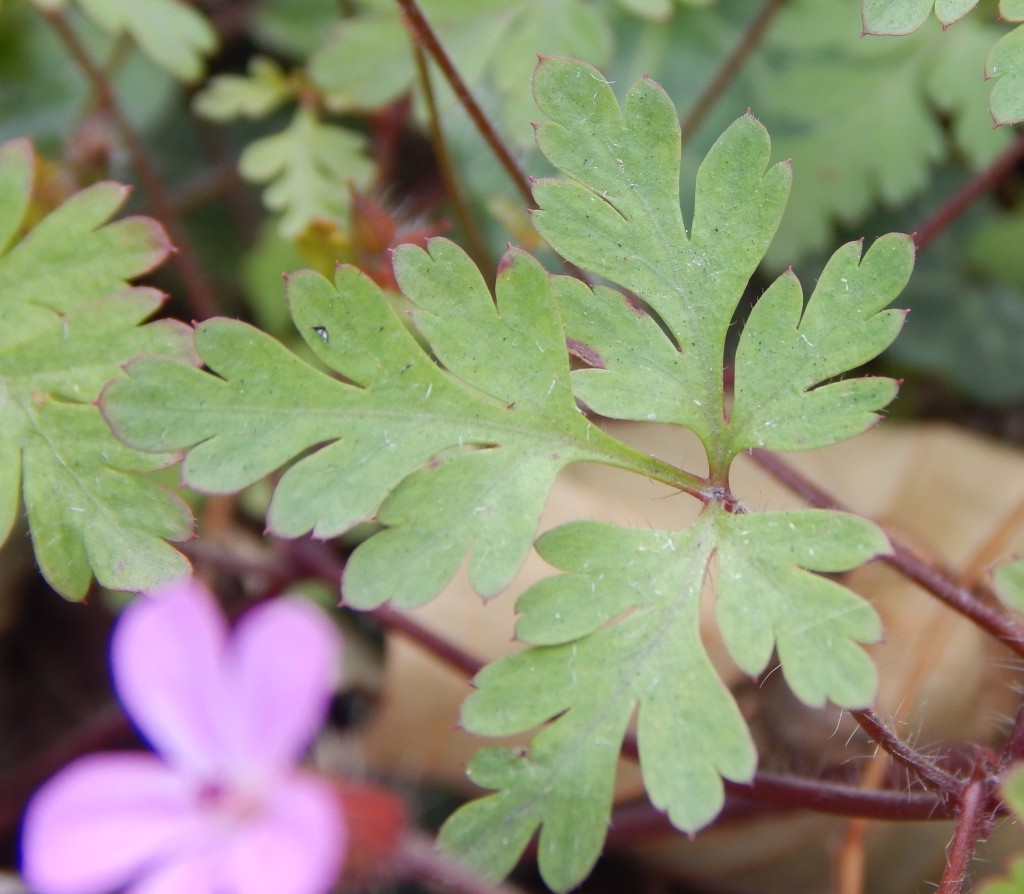

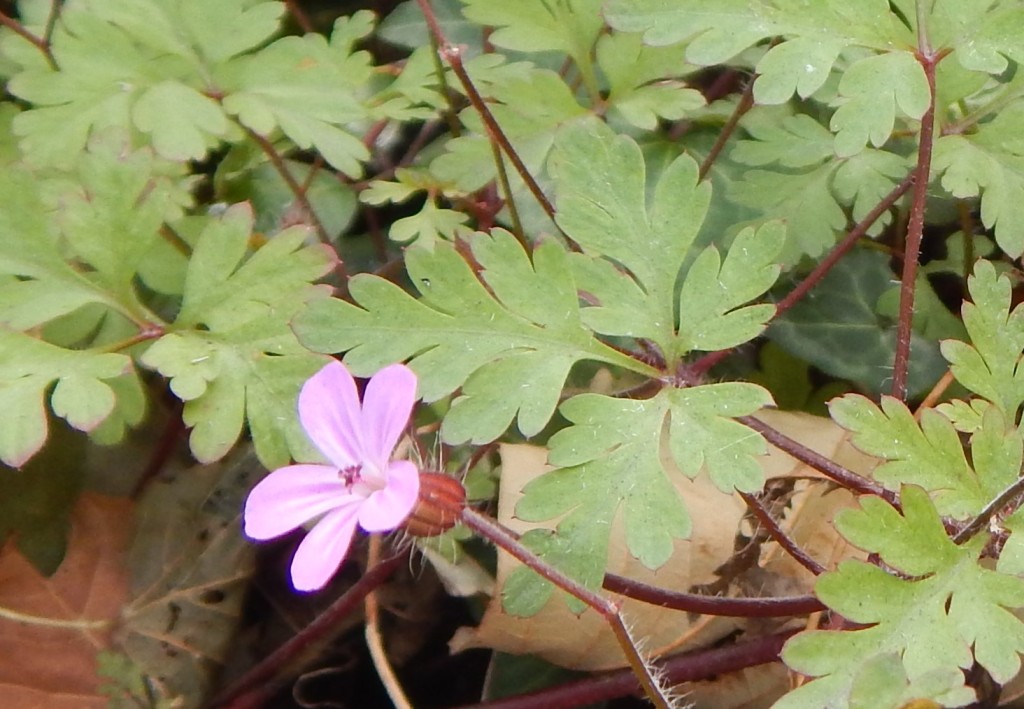

As for almost all common plants it has been used in folk medicine for hundreds of years – to treat diarrhoea, toothache and nosebleeds; and to improve the functions of the liver and gallbladder.
Oxford Geranium
Geranium x oxonianum is a hybrid species originating from a cross between Geranium endressii and Geranium versicolor in 1932
It has attractive almost round, pink flowers, often veined, and is cultivated in gardens. Several cultivars are available.
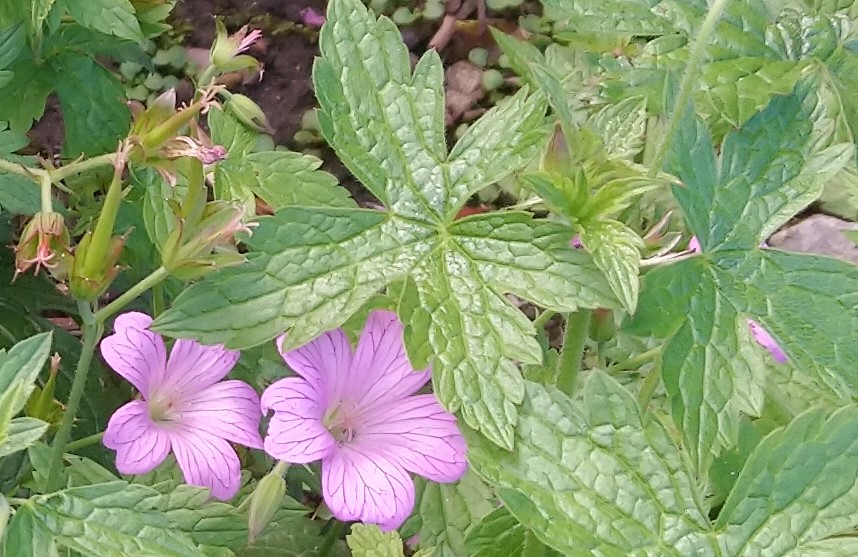
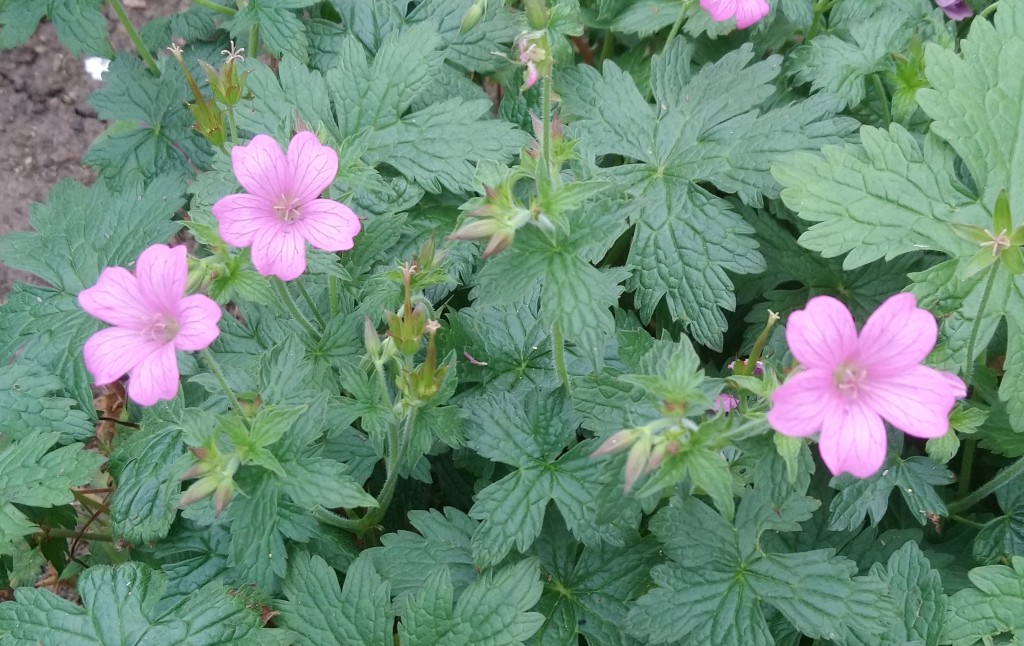
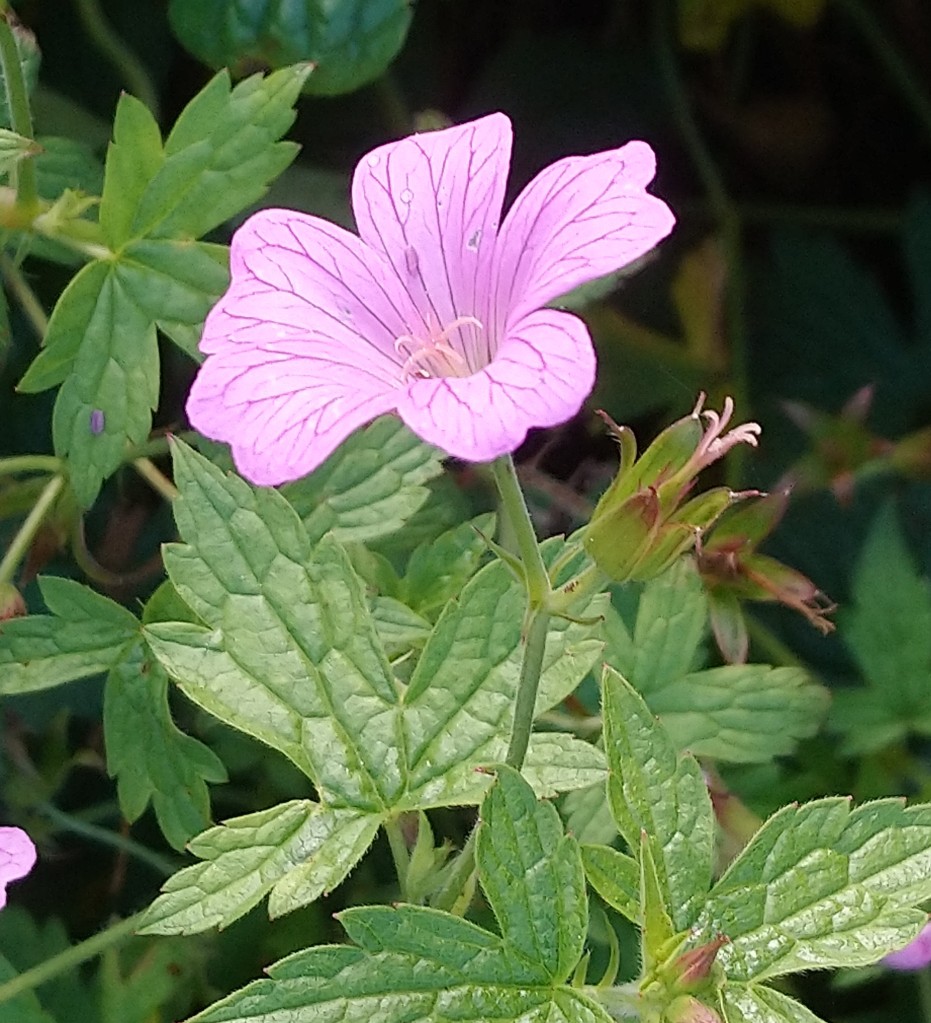

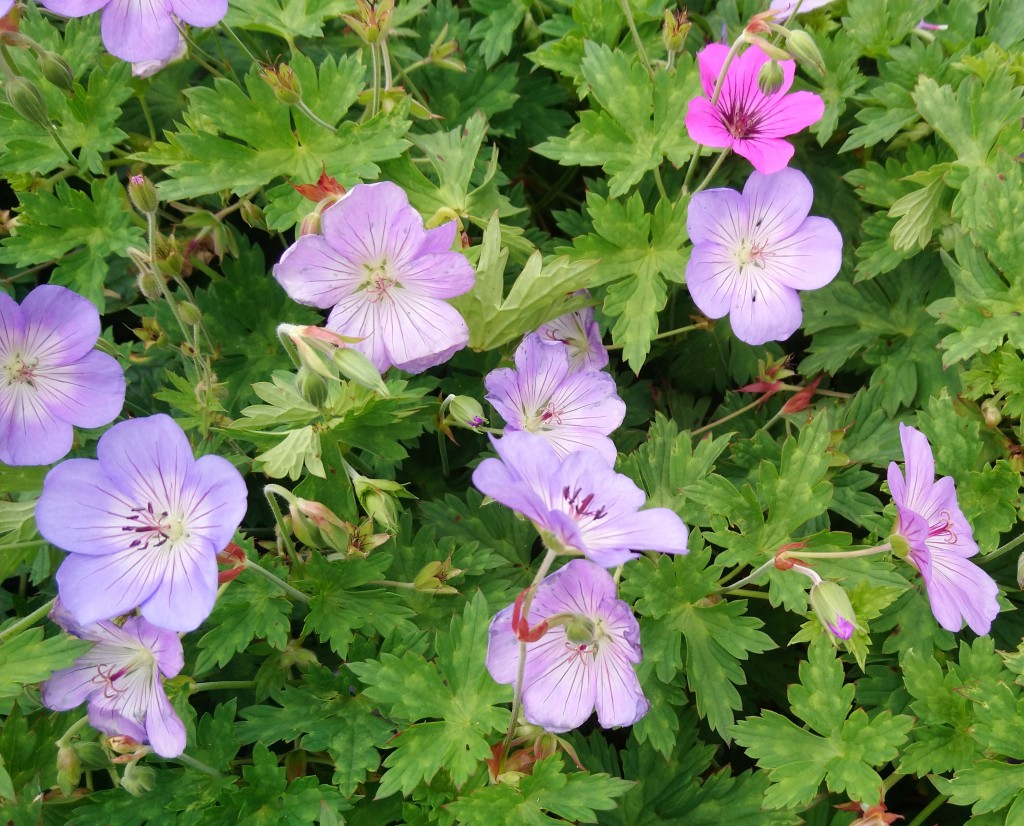
Other Geranium Species
In the wild, you may also see Geranium molle, Dove’s-foot Cranesbill; Geranium sanguineum, Bloody Cranesbill; Geranium purpureum, Little-Robin or about forty other species that are native to Britain or naturalized. There are also many cultivated species.
See Also
There are about three hundred species of Pelargonium, a closely related genus (sometimes called Geraniums.) Most are not hardy so may be more common as house plants, but many are cultivated in gardens.









